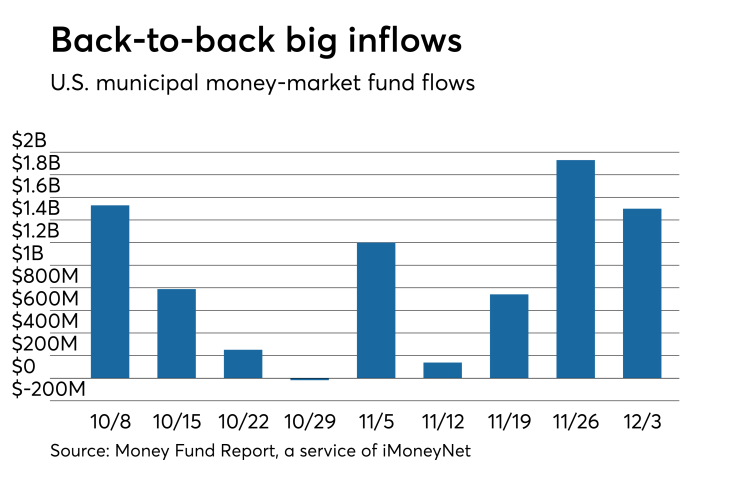Fidelity Investments is dominating a business that is thriving even as stocks and bonds struggle.
Fidelity’s money-market assets grew to $629 billion as of Oct. 31 -- nearly twice as much as its closest rival, Vanguard Group, according to Crane Data. The Boston-based fund company has added more than $50 billion this year, mostly from inflows.
Rising short-term interest rates have lifted yields on the cash-like funds to about 2%, magnifying their allure at a time when other asset classes are under pressure. The trend has helped companies including Vanguard, JPMorgan Chase and Goldman Sachs Group.
As the biggest provider, Fidelity is benefiting the most, raising its market share to more than 20%. Today, the firm’s 41 funds make up one-fourth of its $2.5 trillion under management.
“Fidelity has more buckets and bigger buckets than anyone else and it is starting to rain again,” said Peter Crane, president of Crane Data, the Westborough, Mass.-based industry tracker.

The $3.1 trillion money-fund business suffered after the financial crisis as the Federal Reserve slashed rates to near zero and held them there until 2015. Low rates forced fund companies to waive fees, crimping profitability on the funds that focus on short-term, relatively safe debt. The squeeze, plus added costs that came with the implementation of federal reforms in 2016, spurred industry consolidation.
“Some of the smaller players have exited and we have been the beneficiary of that,” said Tim Huyck, chief investment officer of money markets at Fidelity.
Fidelity has another edge: Its 20 million brokerage customers. When those clients sell securities and leave money in cash, it sits in the firm’s money-market funds. Those deposits represent more than one-third of Fidelity’s money-fund assets.
Industrywide, expense ratios on large money-market funds average about 27 basis points, or 0.27%, according to Crane Data. While their fee levels are below those on most active equity and bond funds, “it is a relatively attractive business, in part because it is very stable,” said Kenneth Lee, an analyst at RBC Capital Markets. Fidelity’s lineup of index funds has very low fees and four funds have no charges at all.
Fidelity has been offering money funds since 1974, when it became the first provider to allow customers to write checks from their accounts. Closely held Fidelity doesn’t publicly break out revenue for the segment, but Crane estimated it could be as much as $1.7 billion annually based on current management fees.
Fidelity’s largest money fund, the $138 billion Fidelity Government Cash Reserves, returned 1.4% this year through Dec. 6 -- better than most equity and fixed-income funds.
“I expect money funds to rise in popularity, especially if they give stocks and bonds a run for the money in 2019,” said James Lowell, editor of the newsletter Fidelityinvestor.com.





